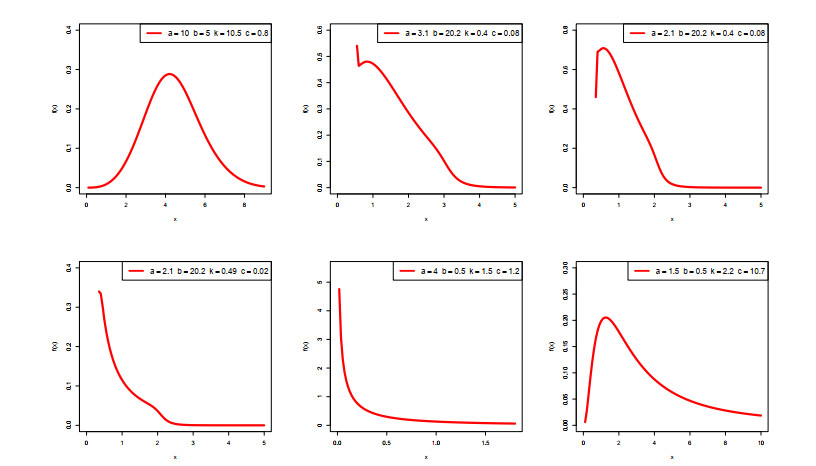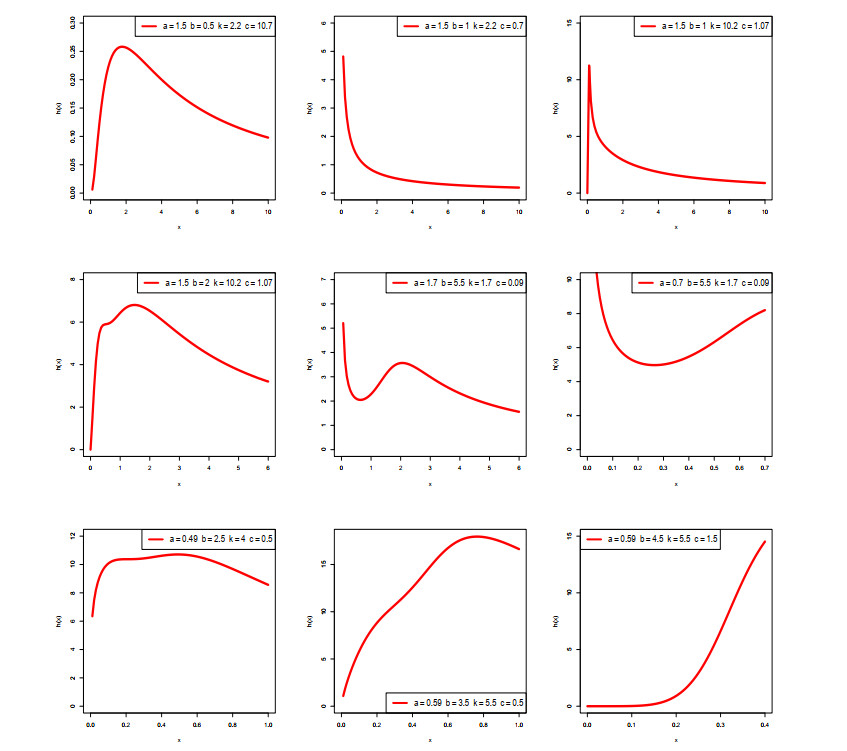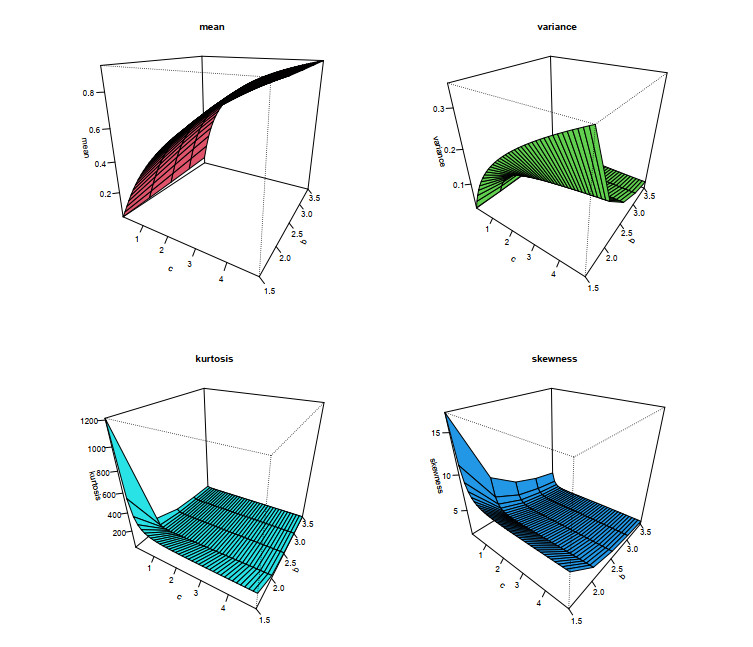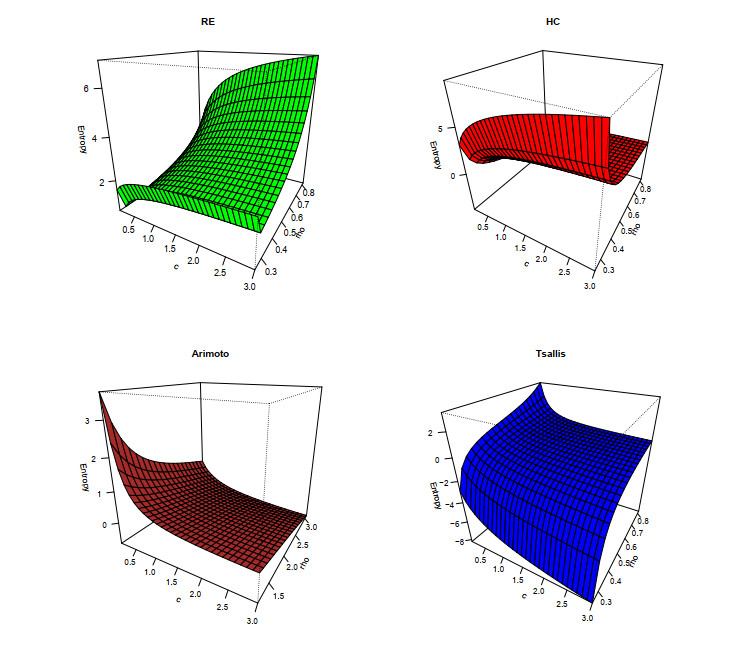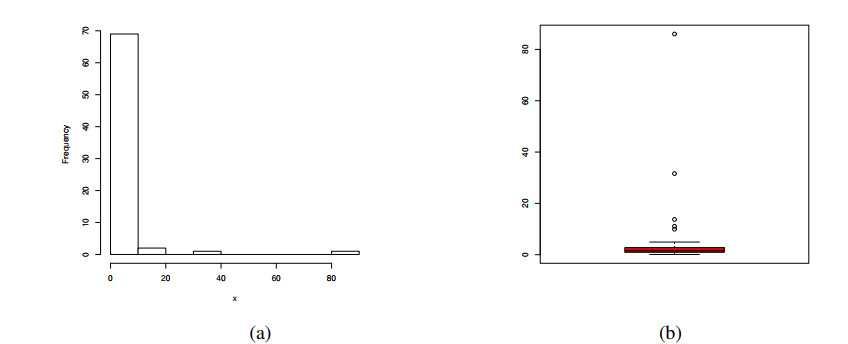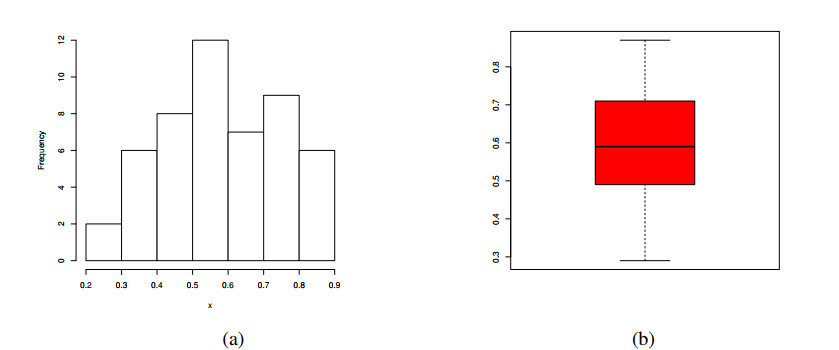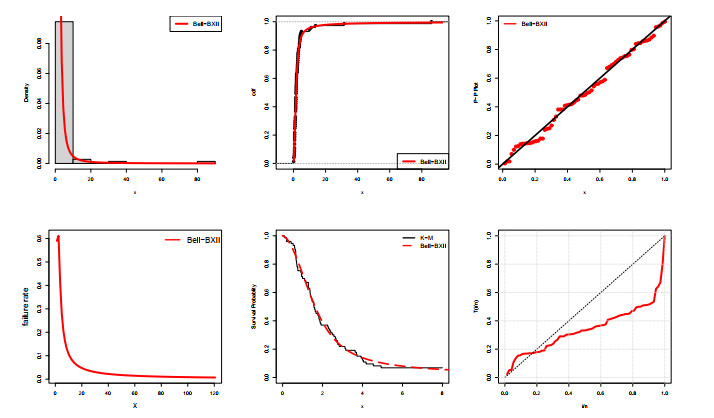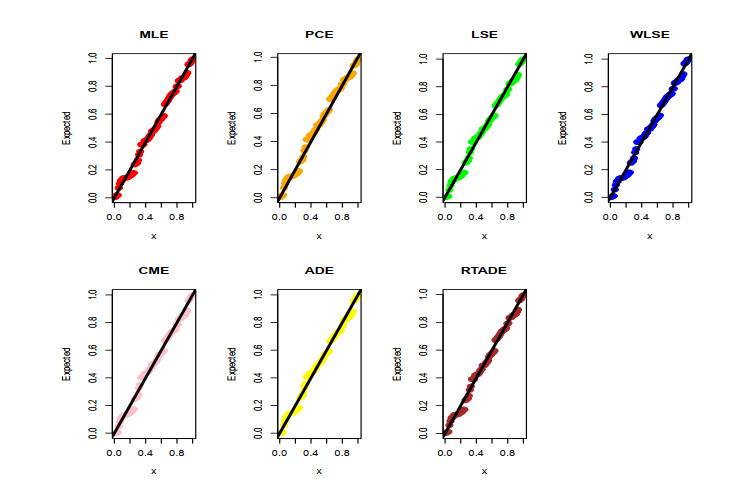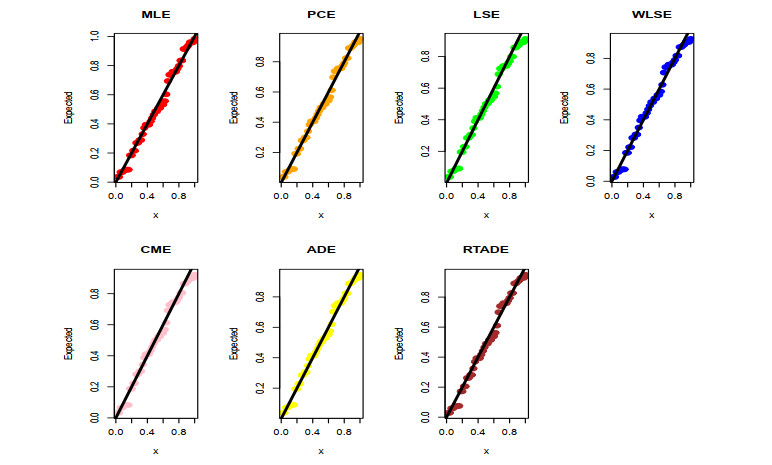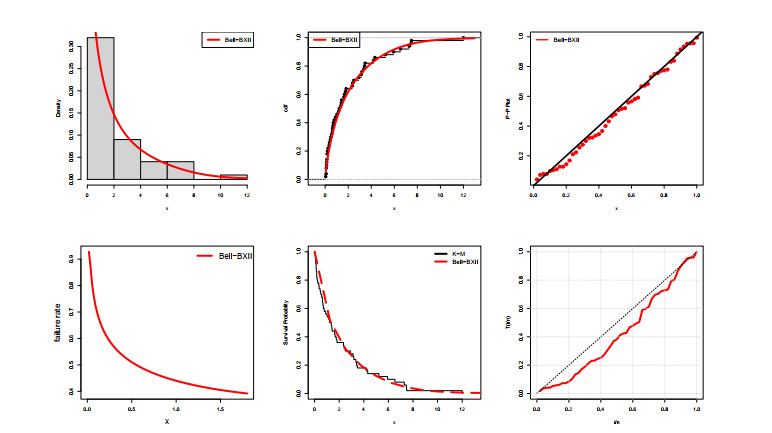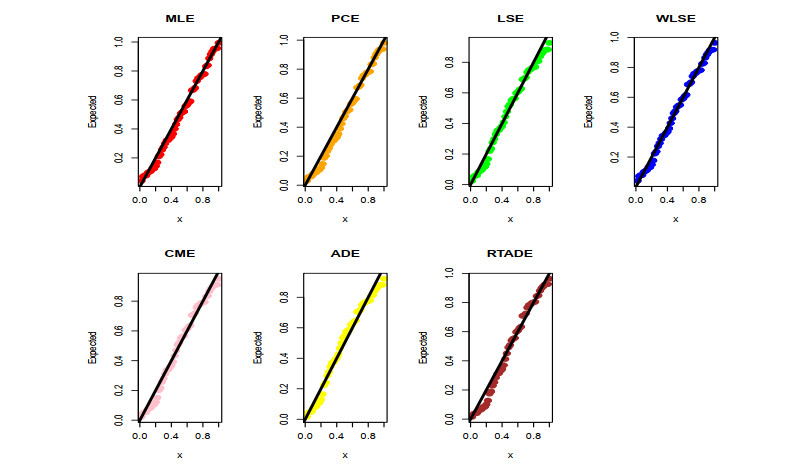Abbreviation: CIF: complex intuitionistic fuzzy, CCIFWA: confidence complex intuitionistic fuzzy weighted averaging, CCIFOWA: confidence complex intuitionistic fuzzy ordered weighted averaging, CCIFWG: confidence complex intuitionistic fuzzy weighted geometric, CCIFOWG: confidence complex intuitionistic fuzzy ordered weighted geometric, CCIFEWA: confidence complex intuitionistic fuzzy Einstein weighted averaging, CCIFEOWA: confidence complex intuitionistic fuzzy Einstein ordered weighted averaging, CCIFEWG: confidence complex intuitionistic fuzzy Einstein weighted geometric, CCIFEOWG: confidence complex intuitionistic fuzzy Einstein ordered weighted geometric, MADM: Multi-attribute decision-making, FS: fuzzy sets, IFS: intuitionistic fuzzy sets, CFS: complex fuzzy sets, CIFS: complex intuitionistic fuzzy sets.
1.
Introduction
A strategic decision-making tool is one of the dominant and valuable techniques in computer science, business administration, and enterprises and is especially used in the selection of different products in markets. One thing is clear, every attribute is played a very important and many different roles in the decision-making process. These different fluctuating roles are typically shown at distinct attribute weights in the MADM technique. But because of ambiguity and uncertainty in genuine life, experts may provide their decision based on the ambiguity and uncertainty. Thus, the always expert obtain the grade of hesitancy among attributes and decision-making, and hence, the expert obtained result based on the above-cited analysis is not beneficial and hence not suitable, considered the best decision. But Zadeh [1] evaluated the above problematic situation by introducing the theory of FS in 1965, represented as a whole and completed structure for evaluating awkward and unreliable information. The main and original form of FS was evaluated with the grade of supporting whose value is contained in the unit interval [0, 1]. Further, aggregating and finding the distance among any number of attributes is a very challenging task for everyone, due to problematic scenarios, certain attentions are available in the form of utilization of FS in different fields [2,3,4]. After some time of the investigation of FS, certain people have taken about the range of the FS, because it contained only the supporting grade, but ignoring the falsity/supporting against grade and due to these reasons, many scholars have faced a lot of ambiguity during decision-making procedures. Therefore, Atanassov [5] utilized the support against grade in the field of FS by introducing the theory of IFS. The mathematical shape of the supporting grade is stated by: μ(y) and the mathematical shape of the supporting against grade is expressed by: ℵ(y) with a rule:
Noticed that the theory of FS is the particular case of the IFS, because by using the value of ℵ(y)=0, then we obtained the theory of FS from the theory of IFS. Further, aggregating and finding the distance among any number of attributes is a very challenging task for everyone, due to problematic scenario, certain attentions are available in the form of utilization of IFS in different fields, for instance, variable weighted-based hybrid approach for interval-valued IFS was derived by Liu et al. [6], Thao [7] discovered the entropies and divergence measures under the consideration of Archimedean norms for IFS, Gohain et al. [8] evaluated the distance and similarity information for IFSs, Garg and Rani [9] discovered the similarity measures for IFS, Hayat et al. [10] determined the new aggregation operators for depicting the collection of information into a one set under the consideration of IFS, Ecer and Pamucar [11] examined the MARCOS technique under the presence of IFSs, distance-based knowledge measures for IFS was derived by Wu et al. [12], Augustine [13] discovered the correlation co-efficient under the consideration of IFS, Yang and Yao [14] evaluated the three-ways construction for IFS and their application in decision-making theory, Mahmood et al. [15] derived the power aggregation operators for improved intuitionistic hesitant fuzzy information, Ocampo et al. [16] presented the TOPSIS method under the presence of the IFSs, Dymova et al. [17] evaluated the TOPSIS technique under the consideration of IFSs, and Alcantud et al. [18] formulated the aggregation of finite chain under the presence of temporal IFSs.
We analyzed that the information available in the above paragraph has very limited application in genuine life because the prevailing information is computed based on FS and IFS which deal with one-dimension information at a time and due to these reasons, it is possible experts have lost a lot of information. Instead of FS and IFS, we have needed such sort of technique which will be perfect and deal with two-dimension information. After some efforts, Ramot et al. [19] find the solution to the above problem by introducing the novel theory of CFS by including the periodic term in the supporting grade, called phase term which plays a very effective and valuable role during the decision-making procedure. Further, aggregating and finding the distance among any number of attributes is a very challenging task for everyone, due to problematic scenarios, certain attentions are available in the form of utilization of CFS in different fields, for instance, Liu et al. [20] examined the distance and cross-entropy measures for CFSs, Al-Qudah and Hassan [21] derived various operations under the presence of complex multi-fuzzy sets, Alkouri and Salleh [22] evaluated the linguistic variables based on CFS and their application, and finally, Li and Chiang [23] discovered the complex neuro-fuzzy information under the presence of CFSs. After some time of the investigation of CFS, certain people have taken about the range of the CFS, because it contained only the supporting grade in the shape of complex-valued but ignoring the falsity/supporting against grade and due to these reasons, many scholars have faced a lot of ambiguity during decision-making procedures. Therefore, Alkouri and Salleh [24] utilized the complex-valued support against grade in the field of CFS by introducing the theory of CIFS. The mathematical shape of the supporting grade is stated by:
and the mathematical shape of supporting against grade is expressed by:
with a rule:
Noticed that the theory of CFS is the particular case of the CIFS, because by using the value of ℵ(y)=0, then we obtained the theory of CFS from the theory of CIFS. Further, aggregating and finding the distance among any number of attributes is a very challenging task for everyone, due to problematic scenarios, certain attentions are available in the form of utilization of CIFS in different fields, for instance, Garg and Rani [25] examined the new aggregation operators under the consideration of CIFS, Garg and Rani [26] derived the robust aggregation information for CIFSs, Garg and Rani [27] discovered the generalized geometric aggregation information under the presence of CIFS, and Ali et al. [28] derived the theory prioritized aggregation operators for complex intuitionistic fuzzy soft information and their application in decision-making. Many individuals have combined different types of structures for evaluating the collection of information into a singleton set. But it is also a very complicated and unreliable task for all researchers is how to combine three or more different structures under the consideration of CIFS. The confidence level is also played a very valuable and dominant role in many awkward and complicated satiations. Here, we have two challenges:
(ⅰ) How to utilize the theory of confidence level in the environment of aggregation operators for algebraic t-norm and t-conorm under the CIFS.
(ⅱ) How to utilize the theory of confidence level in the environment of aggregation operators for Einstein t-norm and t-conorm based on CIFS.
The main benefits and advantages of the presented information are stated below:
(ⅰ) By removing the phase information from the derived work, then the derived work will be changed for simple IFSs.
(ⅱ) By removing the phase information and imaginary part from the derived work, then the derived work will be changed for simple FSs.
(ⅲ) By removing the confidence level from the derived work, then the derived work will be changed for simple aggregation operators under the consideration of algebraic and Einstein t-norm and t-conorm for CIFSs.
(ⅳ) By removing the confidence level and non-membership grade from the derived work, then the derived work will be changed for simple aggregation operators under the consideration of algebraic and Einstein t-norm and t-conorm for CFSs.
(ⅴ) By removing the algebraic t-norm and t-conorm from the derived work, then the derived work will be changed for Einstein aggregation operators under the consideration of Einstein t-norm and t-conorm for CIFSs.
(ⅵ) By removing the Einstein t-norm and t-conorm from the derived work, then the derived work will be changed for simple aggregation operators under the consideration of Algebraic t-norm and t-conorm for CIFSs.
(ⅶ) By removing the algebraic t-norm and t-conorm and non-membership grade from the derived work, then the derived work will be changed for Einstein aggregation operators under the consideration of Einstein t-norm and t-conorm for CFSs.
(ⅷ) By removing the Einstein t-norm and t-conorm and non-membership grade from the derived work, then the derived work will be changed for simple aggregation operators under the consideration of Algebraic t-norm and t-conorm for CFSs.
Further, from the presented information, we can easily describe the simple form of averaging/geometric aggregation operators under the consideration of CIFS. The derived approaches based on CIFS are very famous and valuable compared to existing theories. Under the consideration or presence of the above brief evaluation, our main contribution is listed below:
(ⅰ) To derive the theory of CCIFWA, CCIFOWA, CCIFWG, and CCIFOWG operators under the consideration of CIFSs.
(ⅱ) To describe the properties of the presented operators such as idempotency, monotonicity, and boundedness.
(ⅲ) To discover the theory of CCIFEWA, CCIFEOWA, CCIFEWG, and CCIFEOWG operators under the consideration of CIFSs.
(ⅳ) To describe the properties of the presented operators such as idempotency, monotonicity, and boundedness.
(ⅴ) To demonstrate a valuable and dominant theory of MADM under the presence of invented operators.
(ⅵ) To compare the derived work with various existing works is to show the stability and worth of the presented approach with the help of some suitable examples.
The main evaluation of this theory is available in the shape: In Section 2, we use the idea of CIFS and their laws for diagnosing a new work in the next section. In Section 3, we diagnosed the CCIFWA, CCIFOWA, CCIFWG, and CCIFOWG operators and explained their valuable properties "idempotency, monotonicity and boundedness" and results. Further, we modified the presented operators by taking Einstein t-norm and t-conorm instead of simple algebraic t-norm and t-conorm. In Section 4, we diagnosed certain Einstein operational laws with the help of CIF information and then we exposed the theory of CCIFEWA, CCIFEOWA, CCIFEWG, and CCIFEOWG operators and explained their valuable properties "idempotency, monotonicity, and boundedness" and results. In Section 5, we illustrated a MADM tool based on invented operators to present the rationality and worth of the diagnosed approaches. The illustrated ranking results are also compared with the existing operators. The conclusion of this theory is available in Section 6.
2.
Preliminaries
In this analysis, we use the idea of CIFS and its laws for diagnosing a new work in the next section.
Definition 1: [24] A CIFS Πon Y is defined as:
Where the truth grade is expressed by:
and falsity grade is represented by: ℵ(y)=ℵR(y)ei2πωRℵ(y) with 0≤μR(y)+ℵR(y)≤1,0≤ωRμ(y)+ωRℵ(y)≤1 and i=√−1. A pair ((μR,ωRμ),(ℵR,ωRℵ)) is called a CIF number (CIFN).
Definition 2: [24] Consider three CIFNs
and
then
Definition 3: [24] The score function of CIFN c=((μR,ωRμ),(ℵR,ωRℵ)) is defined as:
And accuracy function of CIFN c=((μR,ωRμ),(ℵR,ωRℵ)) is defined as:
Suppose
are two CIFNs, then if S(c1)<S(c2) then c1<c2 that is c1 is smaller than c2. If S(c1)=S(c2) then if H(c1)<H(c2) then c1<c2 that is c1 is smaller than c2, if H(c1)=H(c2) then c1=c2 that is c1 and c2 represent the same information.
3.
CIF aggregation operators under confidence levels
The primary influence of the current analysis is to diagnose the CCIFWA, CCIFOWA, CCIFWG, and CCIFOWG operators and explained their valuable properties "idempotency, monotonicity and boundedness" and results. Consider a collection (c1,c2,…,cn) of CIFNs and kj be the confidence levels of CIFN cj and 0≤kj≤1, w=(w1,w2,...,wn) be a weight vector such that wj ∈ [0, 1] and ∑nj=1wj=1
Definition 4: The CCIFWA operator is defined as:
If
then the CCIFWA operator reduces to CIF weighted averaging (CIFWA) operator.
Theorem 1: The aggregated value by using the CCIFWA operator is also a CIFN, such that
Proof: Let
We use mathematical induction (MI) to prove Eq (10), such that for n=2, then
then,
Suppose Eq (10) is true for n=m, that is
For n=m+1, we have
This shows that Eq (10) is true for n=m+1, so, Eq (10) is true for all n.
Here, we try to verify the proposed work in Eq (10) with the help of some suitable examples, for this, we use CIFN such as:
with weight vectors 0.4, 0.3, 0.2, 0.1 and confidence levels 0.8, 0.9, 0.7, 0.6, then by using the theory in equation (10), we have
Definition 5: The CCIFWG operator is defined as:
If
then the CCIFWG operator reduces to CIF weighted geometric (CIFWG) operator.
Theorem 2: The aggregated value by using the CCIFWG operator is also a CIFN, such that
Proof: Let
We use MI to prove Eq (13), such that for n = 2, then
So,
Suppose Eq (13) is true for n=m, that is,
For n=m+1, we have
This shows that Eq (13) is true for n=m+1, so, Eq (13) is true for all n.
Here, we try to verify the proposed work in Eq (13) with the help of some suitable examples, for this, we use CIFN such as:
with weight vectors 0.4, 0.3, 0.2, 0.1 and confidence levels 0.8, 0.9, 0.7, 0.6, then by using the theory in Eq (10), we have
Then CCIFWA and CCIFWG operators have the following properties:
(ⅰ) (Monotonicity) if μRj≥μ,Rj, ωRμj≥ω'Rμj and ℵRj≤ℵ'Rj, ωRℵj≤ω'Rℵj for all j, then
(ⅱ) (Idempotency) If c=((μR,ωRμ),(ℵR,ωRℵ)) be a CIFN, μRj=μR,ωRμj=ωRμ, ℵRj=ℵRandωRℵj=ωRℵ for all j, then
and
(ⅲ) (Boundedness) Prove that
Definition 6: The CCIFOWA operator is defined as:
If
then the CCIFOWA operator reduces to CIF ordered weighted averaging (CIFOWA) operator.
Definition 7: The CCIFOWG operator is defined as:
If
then the CCIFOWG operator reduces to CIF weighted ordered geometric (CIFOWG) operator.
Theorem 3: The aggregated value by using the CCIFOWA operator is also a CIFN, such that
and the aggregated value by using the CCIFOWG operator is also a CIFN, such that
4.
Einstein aggregation operations for CIF information using confidence levels
The primary influence of the current analysis is to modify the presented operators by taking Einstein t-norm and t-conorm instead of simple algebraic t-norm and t-conorm. Therefore, first, we diagnosed certain Einstein operational laws with the help of CIF information and then we exposed the theory of CCIFEWA, CCIFEOWA, CCIFEWG, and CCIFEOWG operators and explained their valuable properties "idempotency, monotonicity, and boundedness" and results.
Definition 8: Consider three CIFNs
and
then
Definition 9: The CCIFEWA operator is defined as:
If
then the CCIFEWA operator reduces to CIF weighted averaging (CIFEWA) operator.
Theorem 4: The aggregated value by using the CCIFEWA operator is also a CIFN, such that
Proof: Let
We use the MI to prove Eq (32), such that for n=2, then
then,
Suppose Eq (32) is true for n=m, that is
For n=m+1, we have
This shows that Eq (32) is true, for n=m+1, so, Eq (32) is true for all n.
Definition 10: The CCIFEWG operator is defined as:
If
then the CCIFWG operator reduces to CIF weighted geometric (CIFEWG) operator.
Theorem 5: The aggregated value by using the CCIFEWG operator is also a CIFN, such that
Proof: Let
We use MI to prove Eq (35), we have for n = 2, then
then,
Suppose Eq (35) is true for n=m, that is,
For n=m+1, we have
This shows that Eq (35) is true for n=m+1, so, Eq (35) is true for all n.
Definition 11: The CCIFEOWA operator is defined as:
If
then the CCIFEOWA operator reduces to CIF ordered weighted averaging (CIFEOWA) operator.
Definition 12: The CCIFEOWG operator is defined as:
If
then the CCIFEOWG operator reduces to CIF weighted ordered geometric (CIFEOWG) operator.
Theorem 6: The aggregated value by using the CCIFEOWA operator is also a CIFN, such that
and their aggregated value by using the CCIFEOWG operator is also a CIFN, such that
5.
Multi-attribute decision-making methods
In this section, we introduce a group decision-making procedure to solve group decision-making problems with confidence levels under a complex intuitionistic fuzzy environment. Suppose Ã={ã1,ã2,ã3,...,ãn} be a set of n alternatives, Ç={ç1,ç2,ç3,...,çm} be a set of n criterion with weight vectors w=(w1,w2,...,wm)t such that wj ∈ [0, 1] and ∑mj=1wj=1, and Ë={ë1,ë2,ë3,...,ëp} with weight vectors w=(w1,w2,...,wp)t such that wr ∈ [0, 1] and ∑pr=1wr=1. Then the main process of decision-making is explained below:
Step 1: Suppose ß(r)=(βlj(r))n×m is a complex intuitionistic fuzzy decision matrix, and βlj(r)=(((μR)lj(r),(ωRμ)lj(r)),((ℵR)lj(r),(ωRℵ)lj(r))) is an attribute value provided by the decision-maker ër, which is a CIFN. Also kr where kr ∈ [0, 1] is a confidence level given by decision-makers which shows the degrees to that they are familiar with the research topic.
Step 2: Using the CCIFWA operator:
Or the CCIFWG operator:
To aggregate all complex intuitionistic fuzzy matrices ß(r)=(βlj(r))n×m,(r=1,2,3,...,p) into the single complex intuitionistic fuzzy matrix ß=(βlj)n×m, 1≤l≤n and 1≤j≤m.
Step 3: Aggregate the complex intuitionistic fuzzy numbers βlj for each alternative ãl by CCIFWA (or CCIFWG) operator:
Step 4: Find the score values.
Step 5: Rank all the values.
5.1. Illustrated example
To ease the tension of congestion in huge medical clinics, four patients, signified by xi (i = 1, 2, 3, 4), who are conceivably tainted with lung sicknesses, should be analyzed, what's more, appropriated into various degrees of emergency clinics in progressive clinical treatment framework. The four patients are analyzed from the accompanying four side effects (credits) of the lung infections: ã1: important bodily functions, including pulse and pulse; ã2: internal heat level; ã3: the recurrence of the hack; and ã4: the recurrence of hemoptysis. Assume that the specialist gives the rating values for the four patients concerning the side effects by utilizing confidence CIFNs, and the choice grid is displayed in Tables 1–4.
Then the main process of decision-making is explained below:
Step 1: Suppose ß(r)=(βlj(r))n×m is a complex intuitionistic fuzzy decision matrix, and βlj(r)=(((μR)lj(r),(ωRμ)lj(r)),((ℵR)lj(r),(ωRℵ)lj(r))) is an attribute value provided by the decision-maker ër, which is a CIFN. Also kr where kr ∈ [0, 1] is a confidence level given by decision-makers which shows the degrees to that they are familiar with the research topic.
Step 2: Using the CCIFWA operator, see Tables 5 and 6.
To aggregate all complex intuitionistic fuzzy matrices ß(r)=(βlj(r))n×m,(r=1,2,3,...,p) into the single complex intuitionistic fuzzy matrix ß=(βlj)n×m, 1≤l≤n and 1≤j≤m.
Step 3: Aggregate the complex intuitionistic fuzzy numbers βlj for each alternative ãl by CCIFWA operator:
For CCIFWG operator:
Step 4: Find the score values for the CCIFWA operator
For CCIFWG operator
Step 5: Rank all the values, for the CCIFWA operator
So,
Based on the CCIFWG Steps are:
So,
Hence, both operators are given different values, the best optimal is available in the above ranking results.
5.2. Comparative analysis
Here, we compare the evaluated operators with certain existing operators to show the capability and worth of the diagnosed approaches. For this, we consider some well-known operators which are developed by different authors, called aggregation operators based on IFSs [18], novel aggregation operators based on CIFSs [25], robust averaging/geometric aggregation operators for CIFSs [26], and generalized geometric aggregation operators for CIFSs [27]. A brief evaluation is explained below.
Criterion 1: The theory of aggregation operators based on IFS was diagnosed by Alcantud et al. [18] and contained a huge number of restrictions because these operators developed based on IFS which ignored the phase term and due to this reason, they lose a lot of information. Instead of these operators, the diagnosed operators are more beneficial because they are diagnosed based on CIFS in the presence of confidence degree which is very accurately evaluated the considered information. Therefore, the information available in Tables 1–4 is not evaluated by operators constructed based on IFSs [18].
Criterion 2: The theory of aggregation operators based on CIFS was diagnosed by Garg and Rani [25] and contained a huge number of restrictions because these operators developed based on CIFS which ignored the confidence degree and due to this reason, they lose a lot of information. Instead of these operators, the diagnosed operators are more beneficial because they are diagnosed based on CIFS in the presence of confidence degree which is very accurately evaluated the considered information. Therefore, the information available in Tables 1–4 is not evaluated by operators constructed based on CIFSs [25].
Criterion 3: The theory of Robust averaging\geometric aggregation operators based on CIFS was diagnosed by Garg and Rani [26] and contained a huge number of restrictions because these operators developed based on CIFS which is ignored the confidence degree and due to this reason, they lose a lot of information. Instead of these operators, the diagnosed operators are more beneficial because they are diagnosed based on CIFS in the presence of confidence degree which is very accurately evaluated the considered information. Therefore, the information available in Tables 1–4 is not evaluated by operators constructed based on CIFSs [26].
Criterion 4: The theory of generalized geometric aggregation operators based on CIFS was diagnosed by Garg and Rani [27] and contained a huge number of restrictions because these operators developed based on CIFS which ignored the confidence degree and due to this reason, they lose a lot of information. Instead of these operators, the diagnosed operators are more beneficial because they are diagnosed based on CIFS in the presence of confidence degree which is very accurately evaluated the considered information. Therefore, the information available in Tables 1–4 is not evaluated by operators constructed based on CIFSs [27].
Therefore, the diagnosed operators based on CIFS with confidence levels are massive and powerful due to their mathematical constructions. Hence, in the future, we will utilize it in many areas like engineering science, computer science, and networking systems.
6.
Conclusions
Under the availability of the CIFS, algebraic, Einstein t-norm, and t-conorm, we determined the following ideas:
(ⅰ) We derived the theory of CCIFWA, CCIFOWA, CCIFWG, and CCIFOWG operators under the consideration of CIFSs.
(ⅱ) We described the properties of the presented operators such as idempotency, monotonicity, and boundedness.
(ⅲ) We discovered the theory of CCIFEWA, CCIFEOWA, CCIFEWG, and CCIFEOWG operators under the consideration of CIFSs.
(ⅳ) We described the properties of the presented operators such as idempotency, monotonicity, and boundedness.
(ⅴ) We demonstrated a valuable and dominant theory of MADM under the presence of invented operators.
(ⅵ) We compared the derived work with various existing works to show the stability and worth of the presented approach with the help of some suitable examples.
6.1. Limitation of the proposed work
The main theory of CIFS has very famous and valuable to manage unreliable and vague information in real-life problems, but in various cases, the theory of CIFS has failed, for instance, by using these types of information which cannot satisfy the condition of CIFS, then we assumed that the theory of CIFS has been neglected, for this, we needed to evaluate the theory of complex Pythagorean fuzzy sets, complex q-rung orthopair fuzzy sets, and their modification is to enhance the worth of the derived work.
6.2. Future work
In the future, we aim to utilize the theory of Einstein and algebraic aggregation operators in the environment of complex Pythagorean fuzzy set and their modification and try to employ their application in the field of distance measures [29], TOPSIS method [30], game theory, neural network, artificial intelligence, machine learning, decision-making, clustering analysis, and pattern recognition.
Acknowledgments
The authors would like to thank the Deanship of Scientific Research at Umm Al-Qura University for supporting this work under grand code: 22UQU4310396DSR40.
Conflict of interest
About the publication of this manuscript the authors declare that they have no conflicts of interest.









 DownLoad:
DownLoad:


